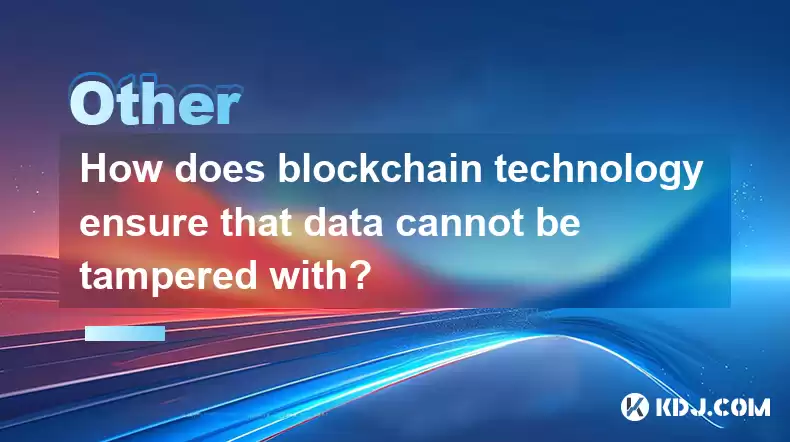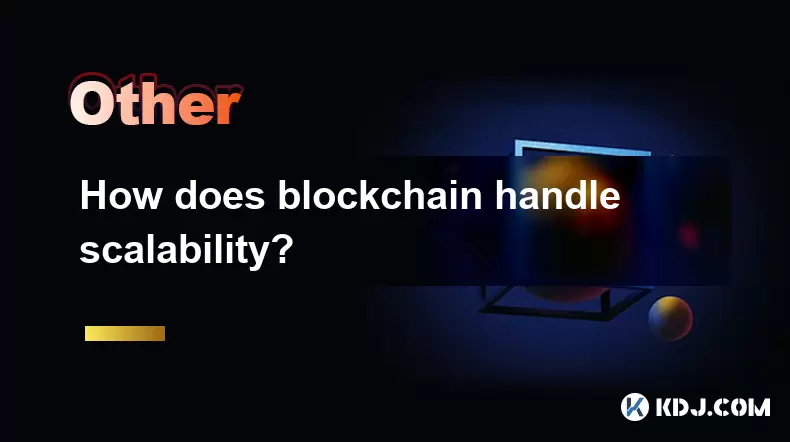-
 Bitcoin
Bitcoin $113900
-1.39% -
 Ethereum
Ethereum $3517
-4.15% -
 XRP
XRP $3.009
1.59% -
 Tether USDt
Tether USDt $0.9997
-0.04% -
 BNB
BNB $766.8
-1.41% -
 Solana
Solana $164.6
-2.38% -
 USDC
USDC $0.9998
-0.02% -
 TRON
TRON $0.3277
0.65% -
 Dogecoin
Dogecoin $0.2023
-1.67% -
 Cardano
Cardano $0.7246
0.05% -
 Hyperliquid
Hyperliquid $38.27
-4.77% -
 Sui
Sui $3.528
-0.52% -
 Stellar
Stellar $0.3890
-0.73% -
 Chainlink
Chainlink $16.16
-2.69% -
 Bitcoin Cash
Bitcoin Cash $539.9
-4.38% -
 Hedera
Hedera $0.2425
-2.00% -
 Avalanche
Avalanche $21.71
-0.97% -
 Toncoin
Toncoin $3.662
5.73% -
 Ethena USDe
Ethena USDe $1.000
-0.02% -
 UNUS SED LEO
UNUS SED LEO $8.964
0.35% -
 Litecoin
Litecoin $107.7
2.33% -
 Shiba Inu
Shiba Inu $0.00001223
-0.40% -
 Polkadot
Polkadot $3.617
-0.97% -
 Uniswap
Uniswap $9.052
-2.49% -
 Monero
Monero $295.1
-3.79% -
 Dai
Dai $0.9999
0.00% -
 Bitget Token
Bitget Token $4.315
-1.85% -
 Pepe
Pepe $0.00001060
0.11% -
 Cronos
Cronos $0.1342
-2.72% -
 Aave
Aave $256.0
-0.87%
How does blockchain technology ensure that data cannot be tampered with?
Blockchain's immutability is ensured by cryptographic hashing, distributed ledgers, and consensus mechanisms, making data alteration extremely difficult and detectable.
Mar 28, 2025 at 08:15 pm

Immutability in Blockchain: A Deep Dive
Blockchain's core strength lies in its ability to maintain data integrity. This is achieved through a combination of cryptographic hashing, distributed ledger technology, and consensus mechanisms. Understanding these elements is key to grasping how tampering is prevented.
Cryptographic hashing is the foundation. Each block of data in the blockchain is assigned a unique cryptographic hash – a fingerprint of the data within. Even a tiny change to the data results in a completely different hash. This makes detecting any alteration incredibly easy.
The distributed nature of the ledger is equally crucial. Instead of residing in a single location, the blockchain is replicated across numerous computers (nodes) in a network. Any attempt to alter data on one copy would immediately be detected by the other nodes holding the unaltered copies.
The consensus mechanism ensures that all nodes agree on the valid state of the blockchain. Different blockchains utilize various consensus methods, such as Proof-of-Work (PoW) or Proof-of-Stake (PoS). These mechanisms require a significant majority of nodes to validate any new block before it's added to the chain. This makes it computationally infeasible to alter past blocks.
Understanding the Process: A Step-by-Step Guide
Let's break down the process of adding a new block and how immutability is maintained:
- Data Collection: New transactions are collected and grouped together.
- Block Creation: This group of transactions forms a new block. A cryptographic hash is calculated for this block.
- Verification and Propagation: The new block is broadcast to the network of nodes.
- Consensus: Nodes verify the block's validity using the consensus mechanism. This involves checking the cryptographic hash and the validity of the transactions within.
- Block Addition: Once a consensus is reached, the block is added to the existing blockchain. The previous block's hash is included in the new block, creating a chain of linked blocks.
- Hash Chain: The new block’s hash is calculated and linked to the previous block's hash. This creates an unbroken chain. Any change in a previous block would alter its hash, breaking the chain and making the alteration immediately apparent.
The Role of Cryptographic Hashing
Cryptographic hashing functions are one-way functions. This means that it's computationally easy to generate a hash from input data, but extremely difficult to reverse the process and obtain the original data from the hash. This property is vital for blockchain security. Even a small change in the data will result in a drastically different hash, instantly revealing any tampering. Popular hashing algorithms used in blockchain include SHA-256 and SHA-3.
The Significance of the Distributed Ledger
The distributed nature of the blockchain is a crucial safeguard against data manipulation. Because the blockchain is replicated across many nodes, a single point of failure doesn't exist. If one node is compromised, the other nodes still hold the correct, unaltered data. This redundancy prevents malicious actors from successfully altering the blockchain without controlling a significant majority of the network, which is computationally and economically infeasible for most blockchains.
Consensus Mechanisms: The Guardians of Integrity
Consensus mechanisms are the rules that govern how new blocks are added to the blockchain. They ensure that all nodes agree on the state of the blockchain. Proof-of-Work (PoW) requires miners to solve complex computational problems to add new blocks, making it computationally expensive to attempt a 51% attack and alter the chain. Proof-of-Stake (PoS) selects validators based on their stake in the network, reducing energy consumption while maintaining security. Different consensus mechanisms offer varying levels of security and efficiency.
The Impact of Immutability on Trust and Transparency
The immutability of blockchain technology is what allows it to foster trust and transparency. Because data cannot be easily altered, blockchain provides a reliable and auditable record of transactions. This is particularly valuable in applications where trust is paramount, such as supply chain management, voting systems, and digital identity verification.
Limitations of Immutability
While blockchain offers high levels of immutability, it's not entirely tamper-proof. 51% attacks, where a malicious actor controls more than half of the network's computing power, can theoretically alter the blockchain. However, the computational cost of such an attack makes it extremely difficult and expensive, especially for established blockchains. Furthermore, software bugs or vulnerabilities in the blockchain's code could potentially be exploited. Finally, data initially entered incorrectly cannot be easily corrected, highlighting the importance of data validation before it's added to the blockchain.
Frequently Asked Questions
Q: Can blockchain data ever be changed?
A: While blockchain data is highly resistant to tampering, it's not completely immutable. Theoretically, a 51% attack could alter the blockchain, though this is extremely difficult and expensive. Incorrect data entered initially cannot be easily changed.
Q: How does blockchain prevent double-spending?
A: The distributed nature of the ledger and the consensus mechanism prevent double-spending. All nodes have a copy of the transaction history, and any attempt to spend the same coin twice would be rejected by the network.
Q: What are the different types of consensus mechanisms?
A: Common consensus mechanisms include Proof-of-Work (PoW), Proof-of-Stake (PoS), Delegated Proof-of-Stake (DPoS), and Practical Byzantine Fault Tolerance (PBFT). Each has its own strengths and weaknesses.
Q: Is blockchain technology completely secure?
A: No technology is completely secure. Blockchain offers a high level of security due to its cryptographic hashing, distributed ledger, and consensus mechanisms. However, vulnerabilities can still exist in the code or through exploits like 51% attacks, though these are rare and expensive to execute.
Q: What is a 51% attack?
A: A 51% attack occurs when a malicious actor gains control of more than 50% of the network's hashing power (in PoW systems) or staking power (in PoS systems). This allows them to potentially reverse transactions or alter the blockchain.
Q: How does immutability differ from immutability in other databases?
A: Unlike traditional databases, blockchain's immutability is achieved through cryptographic hashing, distributed consensus, and a chained structure. This makes it significantly more resistant to tampering than centralized databases. Attempts to alter data are immediately detectable and rejected by the network.
Disclaimer:info@kdj.com
The information provided is not trading advice. kdj.com does not assume any responsibility for any investments made based on the information provided in this article. Cryptocurrencies are highly volatile and it is highly recommended that you invest with caution after thorough research!
If you believe that the content used on this website infringes your copyright, please contact us immediately (info@kdj.com) and we will delete it promptly.
- Worldcoin, Identity, WLD Price: Decoding the NYC Crypto Buzz
- 2025-08-02 21:10:12
- Shiba Inu: Utility and Community Strength Drive Crypto's Evolution
- 2025-08-02 21:50:12
- Crypto Donations, Trump PAC, and Bitcoin: A New York Minute on Political Coin
- 2025-08-02 20:30:12
- Crypto Market Under Pressure: Bearish Momentum and Rising Volatility Take Hold
- 2025-08-02 20:30:12
- Crypto Market Carnage: Liquidations Soar as Ethereum and Bitcoin Take a Beating
- 2025-08-02 21:55:12
- DeFi Token Summer Gains: Is Mutuum Finance the Real Deal?
- 2025-08-02 18:30:12
Related knowledge

What is the difference between on-chain and off-chain transactions?
Aug 02,2025 at 04:22pm
Understanding On-Chain TransactionsOn-chain transactions refer to digital asset transfers that are recorded directly on a blockchain ledger. These tra...

What is the double-spending problem and how does blockchain prevent it?
Aug 02,2025 at 01:07pm
Understanding the Double-Spending ProblemThe double-spending problem is a fundamental challenge in digital currency systems where the same digital tok...

What is the difference between a blockchain and a database?
Aug 01,2025 at 09:36pm
Understanding the Core Structure of a BlockchainA blockchain is a decentralized digital ledger that records data in a series of immutable blocks linke...

How does blockchain handle scalability?
Aug 02,2025 at 02:58pm
Understanding Blockchain Scalability ChallengesBlockchain scalability refers to a network's ability to handle an increasing volume of transactions wit...

What is a hash in a blockchain?
Aug 02,2025 at 05:28am
Understanding the Concept of Hash in BlockchainA hash in the context of blockchain technology refers to a unique digital fingerprint generated by a cr...

What is a hash in a blockchain?
Aug 02,2025 at 04:43am
Understanding the Concept of Hash in BlockchainA hash in the context of blockchain technology refers to a unique digital fingerprint generated by a cr...

What is the difference between on-chain and off-chain transactions?
Aug 02,2025 at 04:22pm
Understanding On-Chain TransactionsOn-chain transactions refer to digital asset transfers that are recorded directly on a blockchain ledger. These tra...

What is the double-spending problem and how does blockchain prevent it?
Aug 02,2025 at 01:07pm
Understanding the Double-Spending ProblemThe double-spending problem is a fundamental challenge in digital currency systems where the same digital tok...

What is the difference between a blockchain and a database?
Aug 01,2025 at 09:36pm
Understanding the Core Structure of a BlockchainA blockchain is a decentralized digital ledger that records data in a series of immutable blocks linke...

How does blockchain handle scalability?
Aug 02,2025 at 02:58pm
Understanding Blockchain Scalability ChallengesBlockchain scalability refers to a network's ability to handle an increasing volume of transactions wit...

What is a hash in a blockchain?
Aug 02,2025 at 05:28am
Understanding the Concept of Hash in BlockchainA hash in the context of blockchain technology refers to a unique digital fingerprint generated by a cr...

What is a hash in a blockchain?
Aug 02,2025 at 04:43am
Understanding the Concept of Hash in BlockchainA hash in the context of blockchain technology refers to a unique digital fingerprint generated by a cr...
See all articles

























































































